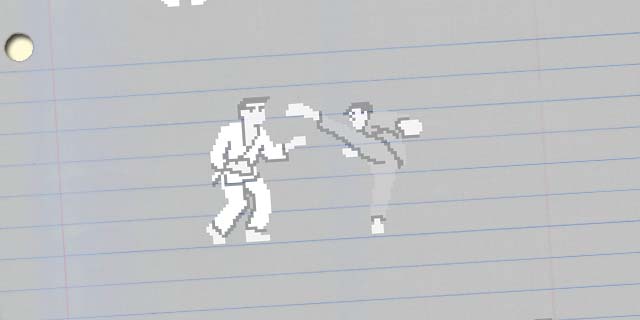
Genre 101 is a series that looks at the past and present of a game genre to find lessons about what defines it. In this installment, guest lecturers Lucas White and Eric Albuen give a seminar on the fighter.
Learning from the sensei
 Lucas White: 1984’s Karate Champ is the ostensible beginning of one-on-one fighting in video games. The player operates the game entirely with joysticks, and must simply land a hit to score. Karate Champ set the stage for many genre features: multiple techniques or “moves,” two-player competition and palette-swapped karate gis.
Lucas White: 1984’s Karate Champ is the ostensible beginning of one-on-one fighting in video games. The player operates the game entirely with joysticks, and must simply land a hit to score. Karate Champ set the stage for many genre features: multiple techniques or “moves,” two-player competition and palette-swapped karate gis.
 Graham Russell: The fighting genre is one of those that was destined to take form eventually, with its real-world inspiration being so obvious. That said, what was it about Karate Champ that really left its mark on the games that would follow that wasn’t necessarily inevitable?
Graham Russell: The fighting genre is one of those that was destined to take form eventually, with its real-world inspiration being so obvious. That said, what was it about Karate Champ that really left its mark on the games that would follow that wasn’t necessarily inevitable?
 Other than its cameo in Bloodsport, you mean? You’re right, one-on-one combat was inevitable, and the martial arts theme wasn’t new even then. I’d argue that its introduction of using the joysticks to perform more moves than you had buttons was pure innovation that makes Karate Champ more than just a history lesson.
Other than its cameo in Bloodsport, you mean? You’re right, one-on-one combat was inevitable, and the martial arts theme wasn’t new even then. I’d argue that its introduction of using the joysticks to perform more moves than you had buttons was pure innovation that makes Karate Champ more than just a history lesson.
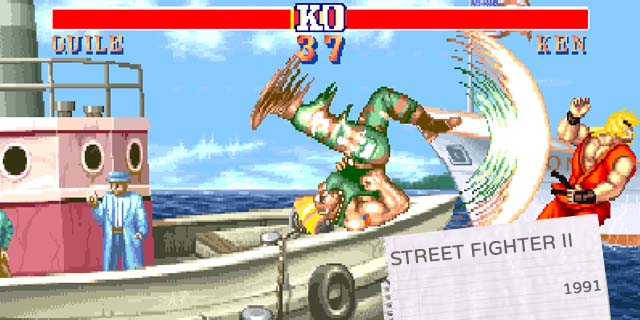
Taking to the streets
 Street Fighter is where fighting games simultaneously blew up and settled in to being intricate and highly competitive. After a failed experiment with pressure-sensitive buttons, the original game introduced six buttons (three punches and three kicks) to work in conjunction with the joystick to perform a wide array of moves, all with their own intended purposes. With the myriad versions of Street Fighter II came further flashiness and depth, with more a more distinctive roster and the beginnings of super moves. All of these mechanics appealed to gamers looking to test their skills against one another, as even just learning the basics took a fair investment of time.
Street Fighter is where fighting games simultaneously blew up and settled in to being intricate and highly competitive. After a failed experiment with pressure-sensitive buttons, the original game introduced six buttons (three punches and three kicks) to work in conjunction with the joystick to perform a wide array of moves, all with their own intended purposes. With the myriad versions of Street Fighter II came further flashiness and depth, with more a more distinctive roster and the beginnings of super moves. All of these mechanics appealed to gamers looking to test their skills against one another, as even just learning the basics took a fair investment of time.
 Street Fighter II was the point at which fighting games coalesced around this idea that individual releases didn’t need to be the beginning and end of a core fighting formula. These days, it’s hard to find a fighter that doesn’t release an update or two with more characters and modes that generally leaves the fighting alone. The all-encompassing success of SFII set the stage for that.
Street Fighter II was the point at which fighting games coalesced around this idea that individual releases didn’t need to be the beginning and end of a core fighting formula. These days, it’s hard to find a fighter that doesn’t release an update or two with more characters and modes that generally leaves the fighting alone. The all-encompassing success of SFII set the stage for that.
 Yes! Embracing hardcore competition inevitably reveals glitches and imbalances that have slim to no chance of showing up during development. In order to keep the scene playing your game, you have to address those problems. It also serves as a great excuse to add more content, which of course leads to more problems, and more versions of the game. It really is a brilliant way to extend the life of your game and make bundles of money along the way.
Yes! Embracing hardcore competition inevitably reveals glitches and imbalances that have slim to no chance of showing up during development. In order to keep the scene playing your game, you have to address those problems. It also serves as a great excuse to add more content, which of course leads to more problems, and more versions of the game. It really is a brilliant way to extend the life of your game and make bundles of money along the way.
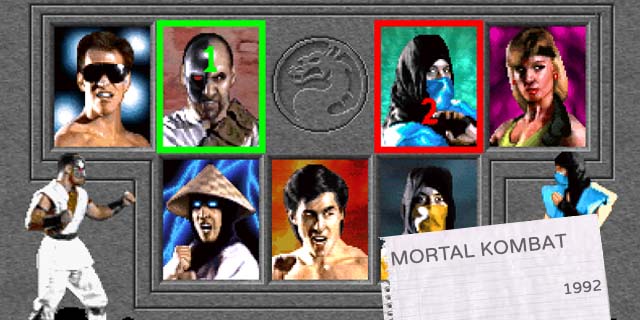
Blood, sweat and tears
 Mortal Kombat is of course known for its controversial themes, but is also notable because of its western origins as well as its fatalities. Finishing moves feed on the competitive nature of fighters, allowing the winner an in-game mechanic for showboating. keeping most of the inputs secret also added extra replay value and intrigue to the series.
Mortal Kombat is of course known for its controversial themes, but is also notable because of its western origins as well as its fatalities. Finishing moves feed on the competitive nature of fighters, allowing the winner an in-game mechanic for showboating. keeping most of the inputs secret also added extra replay value and intrigue to the series.
 What about Western fighters makes them different from Japanese ones? Mortal Kombat’s focus on gore aside, there are definitely some basic mechanical and structural differences that make both types suited to their home markets.
What about Western fighters makes them different from Japanese ones? Mortal Kombat’s focus on gore aside, there are definitely some basic mechanical and structural differences that make both types suited to their home markets.
 Mortal Kombat definitely puts emphasis on presentation and spectacle over fine-tuning and complexity. The special moves are super flashy and the controls are arguably more simple, but every character has the same basic moveset and animations. That may have been the result of the tech they used at the time for its almost-photographic aesthetic, but to this day it hasn’t changed (Injustice being an exception).
Mortal Kombat definitely puts emphasis on presentation and spectacle over fine-tuning and complexity. The special moves are super flashy and the controls are arguably more simple, but every character has the same basic moveset and animations. That may have been the result of the tech they used at the time for its almost-photographic aesthetic, but to this day it hasn’t changed (Injustice being an exception).
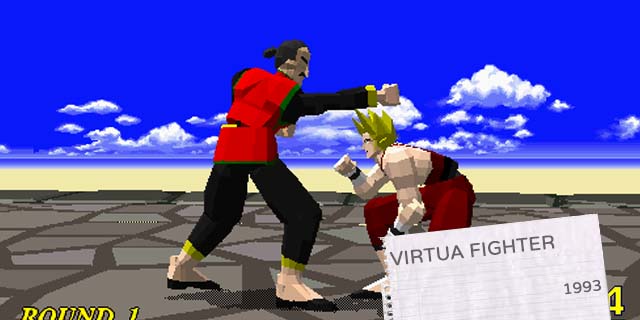
Gaining a new dimension
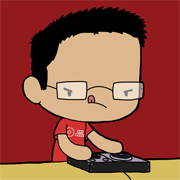 Eric Albuen: Many companies riding on the success of Street Fighter were determined to establish their presence hoping to make a fighter worth playing for the ages. Sega made its mark with Virtua Fighter, one of the first 3D fighting games out there. The simple three-button fighter provided players with an easy entry point. What made this game stand out: the characters knew they were in an actual fighting tournament. While many other fighting games boast this, through story canon, each entry in the series had a winner and had their own individual stories for why they were fighting.
Eric Albuen: Many companies riding on the success of Street Fighter were determined to establish their presence hoping to make a fighter worth playing for the ages. Sega made its mark with Virtua Fighter, one of the first 3D fighting games out there. The simple three-button fighter provided players with an easy entry point. What made this game stand out: the characters knew they were in an actual fighting tournament. While many other fighting games boast this, through story canon, each entry in the series had a winner and had their own individual stories for why they were fighting.
 Even with the rise of polygonal graphics, many fighters have chosen to remain on a 2D plane. What does that ability to move in other directions do to the experience of fighting? What challenges come with it?
Even with the rise of polygonal graphics, many fighters have chosen to remain on a 2D plane. What does that ability to move in other directions do to the experience of fighting? What challenges come with it?
 That extra dimension does provides a new level of strategy. Being able to sidestep can change the way you attack or avoid an opponent. The challenges, however, are being able to implement that well into the game engine. While the game is fairly technical in the execution of moves and combos, I’ve always found myself struggling to sidestep efficiently, ultimately leading to an untimely demise from an accidental jump.
That extra dimension does provides a new level of strategy. Being able to sidestep can change the way you attack or avoid an opponent. The challenges, however, are being able to implement that well into the game engine. While the game is fairly technical in the execution of moves and combos, I’ve always found myself struggling to sidestep efficiently, ultimately leading to an untimely demise from an accidental jump.
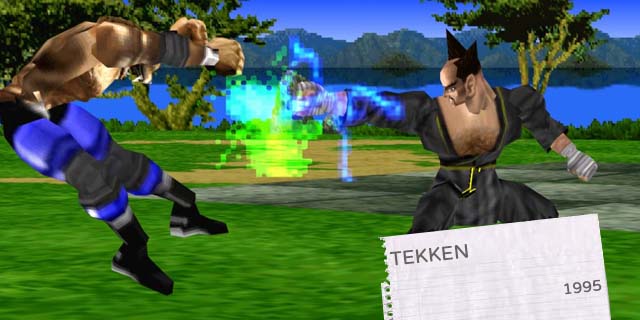
A focus on spectacle
 Most games to this point had a button that would determine the strength of the attack, but Tekken decided to take it in a different direction and attach a limb to each button. With that in mind, players were able to create combos, and were rewarded with a high-damage output if successfully performed. The game also featured a colorful cast of characters ranging from normal people to supernatural creatures.
Most games to this point had a button that would determine the strength of the attack, but Tekken decided to take it in a different direction and attach a limb to each button. With that in mind, players were able to create combos, and were rewarded with a high-damage output if successfully performed. The game also featured a colorful cast of characters ranging from normal people to supernatural creatures.
 Tekken has experienced massive popularity in Japan, often earning equal billing, but its international appeal hasn’t reached that level. What about it do you think makes it so inherently Japanese, and slow to resonate in the West?
Tekken has experienced massive popularity in Japan, often earning equal billing, but its international appeal hasn’t reached that level. What about it do you think makes it so inherently Japanese, and slow to resonate in the West?
 I believe that it’s the availability of the game and the amount of time between the releases. Arcades are still very much a thing in many Asian countries. These places are usually able to receive the latest versions when they’re released. Due to the price of importing the game, as well as the lack of arcades in the West, we don’t get to experience these games until they’re released on consoles. Due to the lack of constant exposure to the series, it hasn’t gained the kind of traction it could be receiving.
I believe that it’s the availability of the game and the amount of time between the releases. Arcades are still very much a thing in many Asian countries. These places are usually able to receive the latest versions when they’re released. Due to the price of importing the game, as well as the lack of arcades in the West, we don’t get to experience these games until they’re released on consoles. Due to the lack of constant exposure to the series, it hasn’t gained the kind of traction it could be receiving.
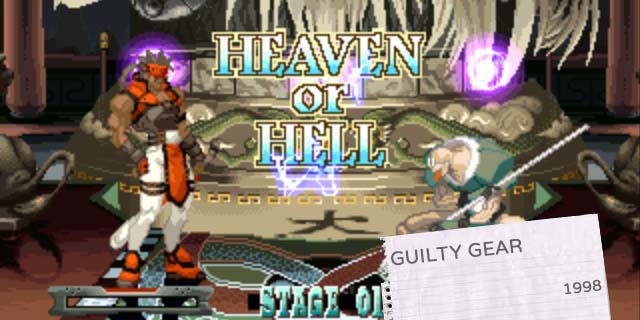
The appeal of impenetrable depth
 Guilty Gear appeared on the scene in 1998 in a rather explosive fashion. The game was praised for its detailed sprite work, high-energy rock soundtrack and technical gameplay that required the utmost precision from players. The game would spark a trend of companies creating over-the-top, stylish characters with crazy moves in deep, intricate fantasy worlds.
Guilty Gear appeared on the scene in 1998 in a rather explosive fashion. The game was praised for its detailed sprite work, high-energy rock soundtrack and technical gameplay that required the utmost precision from players. The game would spark a trend of companies creating over-the-top, stylish characters with crazy moves in deep, intricate fantasy worlds.
 This line of fighting games and the subgenre it created tends to focus on complexity over accessibility, to the point that it can often be intimidating. It this intentional? Does the idea of being obtuse and tough to get the hang of actually cultivate and retain its small, core following?
This line of fighting games and the subgenre it created tends to focus on complexity over accessibility, to the point that it can often be intimidating. It this intentional? Does the idea of being obtuse and tough to get the hang of actually cultivate and retain its small, core following?
 I believe it’s intentional, but there’s been a conscious effort to make the formula accessible with releases like Persona 4: Arena. That said, people seem to be drawn to this kind of complexity. They seem to welcome this kind of challenge and see it as a way, within their own communities, to represent how much time and dedication they put into the game.
I believe it’s intentional, but there’s been a conscious effort to make the formula accessible with releases like Persona 4: Arena. That said, people seem to be drawn to this kind of complexity. They seem to welcome this kind of challenge and see it as a way, within their own communities, to represent how much time and dedication they put into the game.
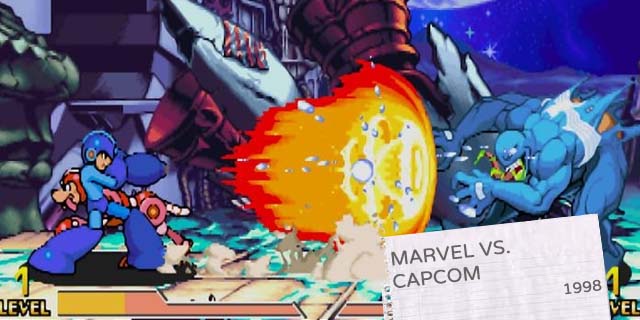
An all-star clash
 Like beat-‘em-ups and, perhaps, platformers, fighters are malleable in that each one follows a fairly standard formula. It allows developers to really play with the characters available to consumers. This of course lends itself quite well to branding, and once again competition is a key component, leading to crossovers like Marvel vs. Capcom. A comic book staple, fans of geeky things always love to see their favorite characters beating the tar out of each other regardless of their respective canons.
Like beat-‘em-ups and, perhaps, platformers, fighters are malleable in that each one follows a fairly standard formula. It allows developers to really play with the characters available to consumers. This of course lends itself quite well to branding, and once again competition is a key component, leading to crossovers like Marvel vs. Capcom. A comic book staple, fans of geeky things always love to see their favorite characters beating the tar out of each other regardless of their respective canons.
 A fighting game crossover is relatively simple to implement, since there’s no real focus on the plot required to get there. What isn’t quite as easy is balance. When combining different worlds, especially ones with superheroes, how exactly do you go about making it a fair fight between a god-like entity and a guy who learned some kick moves?
A fighting game crossover is relatively simple to implement, since there’s no real focus on the plot required to get there. What isn’t quite as easy is balance. When combining different worlds, especially ones with superheroes, how exactly do you go about making it a fair fight between a god-like entity and a guy who learned some kick moves?
 Dial the crazy up to the max, of course! The appeal of most crossovers is less about the hardcore and more about how much noise is on the screen at any given time. That also helps these fighters reach a larger audience, as they aren’t always designed with heavy competition in mind. The controls are usually simple and friendly to button-mashing. Marvel vs. Capcom was the closest thing the genre had to a party game for a long time.
Dial the crazy up to the max, of course! The appeal of most crossovers is less about the hardcore and more about how much noise is on the screen at any given time. That also helps these fighters reach a larger audience, as they aren’t always designed with heavy competition in mind. The controls are usually simple and friendly to button-mashing. Marvel vs. Capcom was the closest thing the genre had to a party game for a long time.
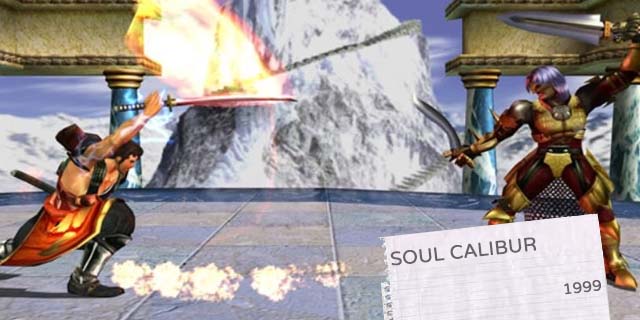
Raising your weapon
 While Battle Arena Toshinden was the first big weapons-based fighter, Soul Calibur stands out as one of the greatest fighters to hit the fighting game scene. The game introduced the eight-way run, allowing players to move freely along the stage and giving players that freedom they had never seen in a fighting game. They were finally able to break free from the lateral movement that limited many fighters before it. Soul Calibur was also very easy to play.
While Battle Arena Toshinden was the first big weapons-based fighter, Soul Calibur stands out as one of the greatest fighters to hit the fighting game scene. The game introduced the eight-way run, allowing players to move freely along the stage and giving players that freedom they had never seen in a fighting game. They were finally able to break free from the lateral movement that limited many fighters before it. Soul Calibur was also very easy to play.
 Soul Calibur, on its face, isn’t that much different from a standard fighter, yet it gained a reputation as a party-play showpiece in a way that its peers, like Dead or Alive or Street Fighter, just couldn’t muster. What is it that it brought to the formula that made it more fun for players of mixed skill levels and intensity?
Soul Calibur, on its face, isn’t that much different from a standard fighter, yet it gained a reputation as a party-play showpiece in a way that its peers, like Dead or Alive or Street Fighter, just couldn’t muster. What is it that it brought to the formula that made it more fun for players of mixed skill levels and intensity?
 The Soul Calibur series has its own complexities that the high-level players exploit all the time, but none of that knowledge is necessary to play the game decently. The ease of movement and simplistic gameplay seem to drive this game’s popularity through the roof. Because powerful moves don’t take much effort to pull off, even beginners can turn the tables on a high level player if they aren’t careful.
The Soul Calibur series has its own complexities that the high-level players exploit all the time, but none of that knowledge is necessary to play the game decently. The ease of movement and simplistic gameplay seem to drive this game’s popularity through the roof. Because powerful moves don’t take much effort to pull off, even beginners can turn the tables on a high level player if they aren’t careful.
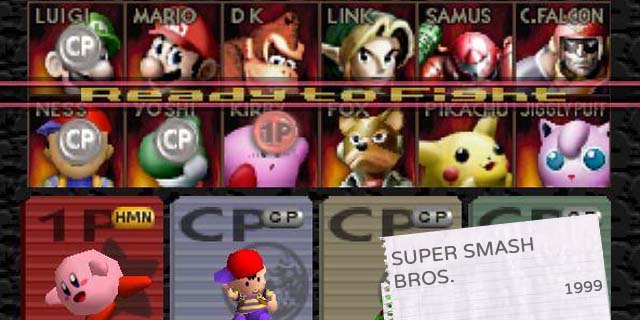
A different sort of approach
 It was crazy even to imagine seeing Mario duke it out against Link, Donkey Kong and Pikachu all in the same world, but Nintendo managed to create a fighting game all its own in Super Smash Bros. What made it different from most fighters was the removal of a life bar. Instead, players would build up damage based on a percentage gauge and damage opponents enough to knock them out of arenas of varying sizes. While not a traditional fighter by any stretch, Super Smash Bros. managed to create its own template for success.
It was crazy even to imagine seeing Mario duke it out against Link, Donkey Kong and Pikachu all in the same world, but Nintendo managed to create a fighting game all its own in Super Smash Bros. What made it different from most fighters was the removal of a life bar. Instead, players would build up damage based on a percentage gauge and damage opponents enough to knock them out of arenas of varying sizes. While not a traditional fighter by any stretch, Super Smash Bros. managed to create its own template for success.
 Smash Bros. may not seem to be the tightest-playing game out there, but it’s managed to persist despite competition from Superbot, Hudson and even Brawl co-developers Game Arts. Sure, it has nostalgia on its side, but it’s more than that, isn’t it?
Smash Bros. may not seem to be the tightest-playing game out there, but it’s managed to persist despite competition from Superbot, Hudson and even Brawl co-developers Game Arts. Sure, it has nostalgia on its side, but it’s more than that, isn’t it?
 People seem to associate Nintendo with “kiddie” games, and even as it tries to mature its image, that perception doesn’t seem to go away. Underneath the simple party-driven gameplay is a deep fighter that has mechanics and strategies as deep as many “traditional” fighters out there. This seems to be the driving force for Smash‘s popularity. With the game’s three releases, the community is always finding out new things that keep each game fresh and highly competitive. Nothing has been set in stone, and people are always finding out new things about the game every day.
People seem to associate Nintendo with “kiddie” games, and even as it tries to mature its image, that perception doesn’t seem to go away. Underneath the simple party-driven gameplay is a deep fighter that has mechanics and strategies as deep as many “traditional” fighters out there. This seems to be the driving force for Smash‘s popularity. With the game’s three releases, the community is always finding out new things that keep each game fresh and highly competitive. Nothing has been set in stone, and people are always finding out new things about the game every day.
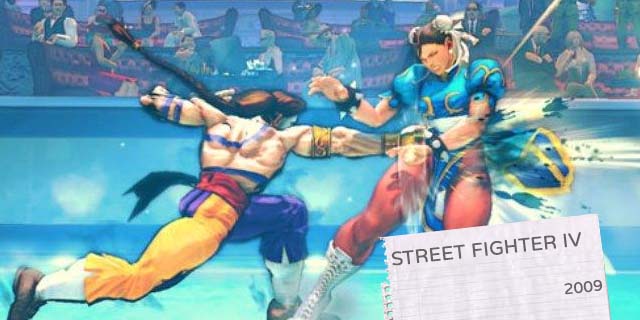
Living to fight another day
 Street Fighter can be reasonably considered the face of the rise, fall and rebirth of fighters. Street Fighter III was the result of fighters becoming more and more complex over the years, which backfired once they became too daunting for the mass market. 3D fighters kept things going on a sort of high-rent niche level, but once Street Fighter IV came out, everything changed again. Capcom went back to its roots, bringing people back with familiar characters and mechanics, while making some additions that were much more accessible to casual players. Input shortcuts helped players pull off special moves, even if they didn’t quite have the dexterity previous fighters required. Capcom also went to great lengths to revive and foster the competitive scene, with official sponsored tournaments and massive community outreach.
Street Fighter can be reasonably considered the face of the rise, fall and rebirth of fighters. Street Fighter III was the result of fighters becoming more and more complex over the years, which backfired once they became too daunting for the mass market. 3D fighters kept things going on a sort of high-rent niche level, but once Street Fighter IV came out, everything changed again. Capcom went back to its roots, bringing people back with familiar characters and mechanics, while making some additions that were much more accessible to casual players. Input shortcuts helped players pull off special moves, even if they didn’t quite have the dexterity previous fighters required. Capcom also went to great lengths to revive and foster the competitive scene, with official sponsored tournaments and massive community outreach.
 Much is different about the fighting scene today from the ‘90s arcade explosion, from the expectations to the economics and everything in between. How have modern releases changed to keep up with this shifting environment?
Much is different about the fighting scene today from the ‘90s arcade explosion, from the expectations to the economics and everything in between. How have modern releases changed to keep up with this shifting environment?
 DLC has certainly changed things a bit. When a new update comes along, it sometimes comes in two forms: a cheaper DLC option for those who already have the previous version, and a regular physical disc for collectors and potential newcomers. Other new staples are extensive training modes, comeback mechanics and emphasis on 2.5D aesthetics for extra mass market appeal. Online play is also a huge deal now, and more and more technologies are coming out of the woodwork to tackle input latency.
DLC has certainly changed things a bit. When a new update comes along, it sometimes comes in two forms: a cheaper DLC option for those who already have the previous version, and a regular physical disc for collectors and potential newcomers. Other new staples are extensive training modes, comeback mechanics and emphasis on 2.5D aesthetics for extra mass market appeal. Online play is also a huge deal now, and more and more technologies are coming out of the woodwork to tackle input latency.



















